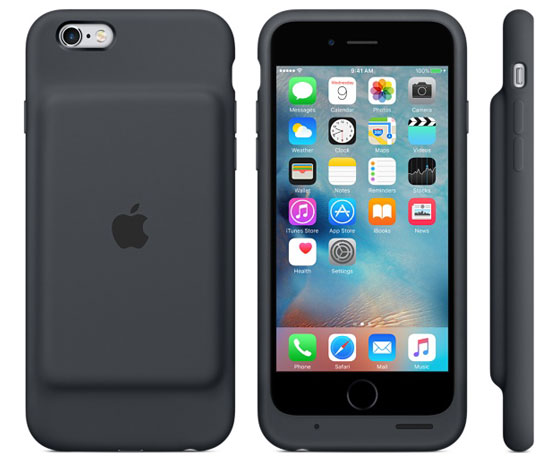
Welcome, dear friends, to another edition of Gadget Dreams and Nightmares, the column that plunges into the muddy waters of the latest gadget announcements in the hopes of plucking a pearl or two.
In our pool of enlightenment this week are the first official Apple iPhone battery case, a palm-sized 360-degree camera, and possibly the safest drone around.
As ever, these are not reviews and the ratings relate only to how much I’d like to try out each item. I’m not sure I’d be seen dead in public with that battery case, though.
Amplified Apple
After years of seeing third-party companies release battery pack cases for its iPhone line, Apple finally has entered the market itself.
The Smart Battery Case (pictured above) aims to protect your iPhone and provide it with extra power when you need it.
A full charge on the phone and the battery case delivers up to 25 hours of talk time, and up to 18 hours of LTE Internet use. The iPhone’s lock screen and Notification Center show how much charge you have left, and the case supports Lightning accessories.
Regular readers will note that I’m an admirer of devices with long battery lives. That’s difficult with smartphones, given their data usage and energy-sapping screens. So on the surface, there’s a lot for me to like about the Smart Battery Case, especially with the charge display function.
You’d think after all that time watching what others were creating, and with its own storied design history, Apple could have whipped up something a little more aesthetically pleasing here. There’s an unsightly bump on the back that does not jibe with Apple’s typical design standards. It calls attention to the case in a way that iOS devices and accessories usually do not.
Meanwhile, the silicone case will cause problems for those, such as myself, who keep their smartphones in a pocket. That material clings to fabric, and I might not be able to fish out my phone in time to answer a call.
As a new owner of an iPhone 6, an external charger is something I’ll need down the line after my battery’s gone through a few hundred charges and the capacity starts dropping — but I don’t think this is the answer for me.
Rating: 3 out of 5 Phones Stuck in Pockets
Full Circle
As the virtual reality movement gathers steam, so too will demand for consumer technology to record footage in all directions.
Luna, a camera currently on a crowdfunding campaign, has two wide-angle lenses that can record 360-degree footage at 2K resolution.
Luna also will give users the option of live streaming their surroundings over WiFi.
Memora, the company behind Luna, has equipped it with gyro-stabilization. That’s just as well, since the device can fit in the palm of your hand.
If holding it steady isn’t really for you, there’s also the option of fixing it to a metal surface, since it’s magnetic. It’s apparently rugged, too, and I’m looking forward to seeing what virtual-reality videos emerge from someone taking Luna for a swim.
I like Luna a bunch, and at US$299 for those backing the camera, it’s good value. I certainly want to try my hand at creating 360-degree videos, and Luna’s the most accessible dedicated device I’ve seen, so it could prove a viable option for me.
Rating: 4 out of 5 All the Way Arounds
Safe Eye in the Sky
Fleye is a drone that promises to be a little safer than many others of its ilk.
Whereas quadcopters have four rotating blades that might cause injury if one is not too careful, Fleye encases all of its moving parts, meaning you can gently nudge it out of the way if it moves a little too close to you, or shift it into position for a better shot..
It has automated controls, so you can tap a button to send Fleye into the air for a selfie or panoramic shot, or tell it to hover in place while you adjust the altitude or viewing angle and watch what it’s capturing through an accompanying app. You can, of course, take manual control as well.
While battery life is limited to a 10-minute flight, it’s seemingly easy to swap out the battery.
The open source platform is a plus, and I admire the safety aspect to a degree — it’s something I’d like to see in Amazon’s delivery drones, for instance.
Yet there’s a niggling sense that we shouldn’t quite rush to child-proof hobby drones. In my mind, we’re still in the punk rock era of testing drones and creating new rules, and it feels as though we need to shed a little blood in the process.
[“source-technewsworld”]












